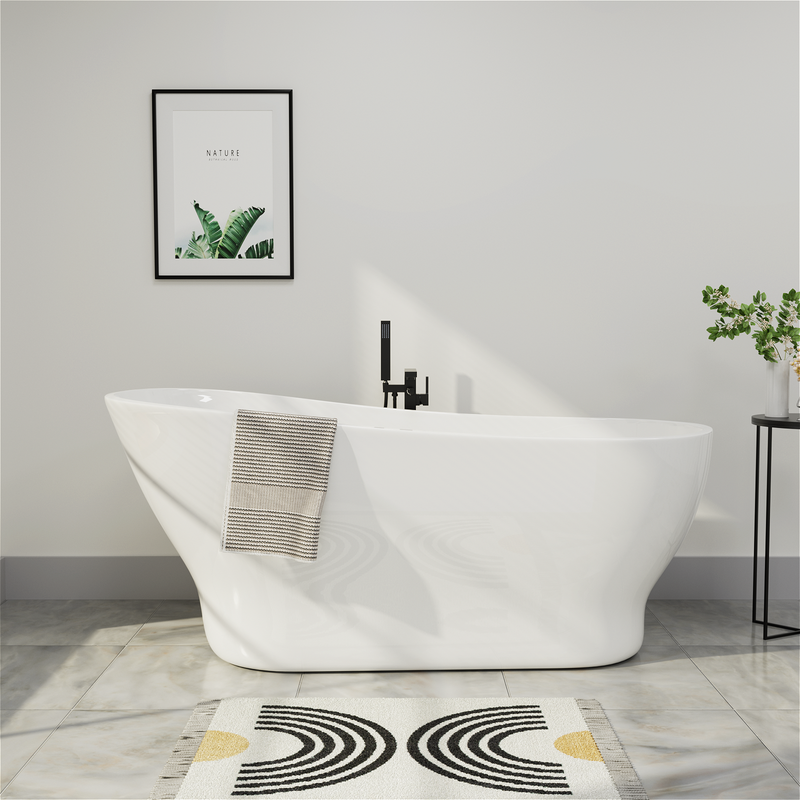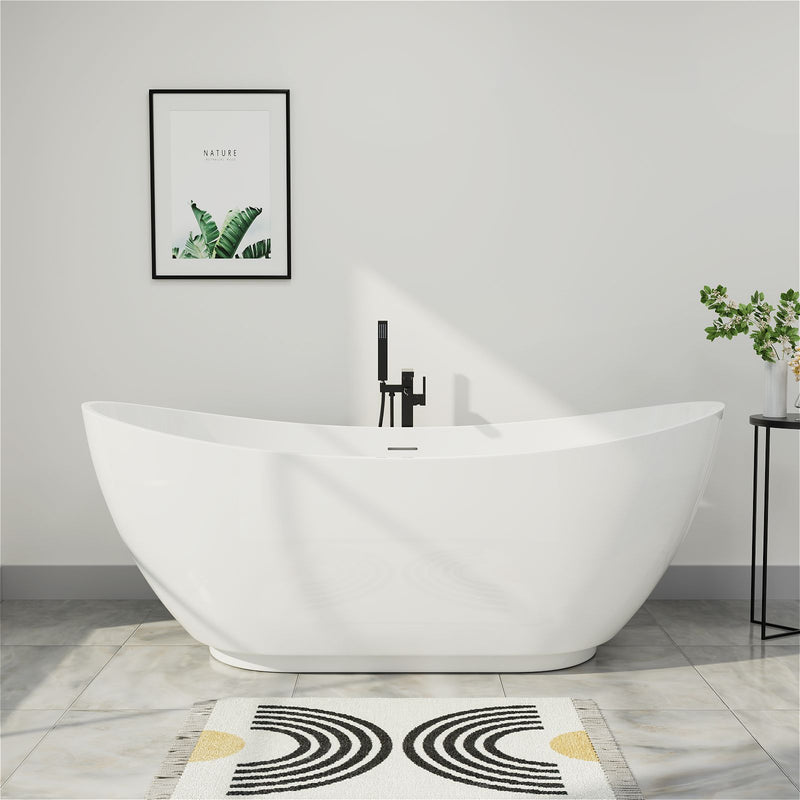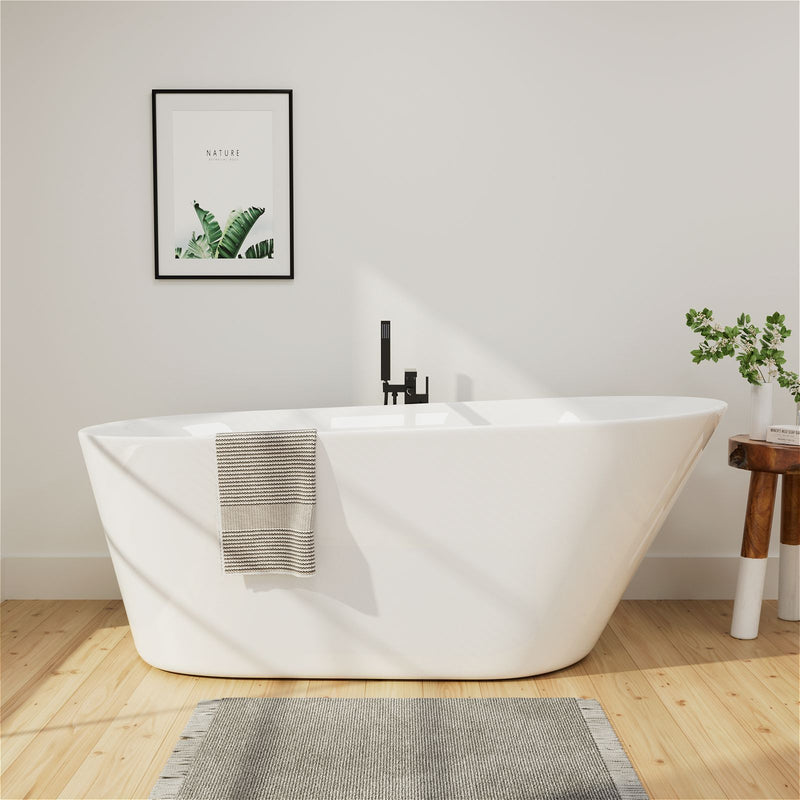A leaking bathtub is more than just an inconvenience—it can lead to serious water damage, mold growth, and costly repairs if left unaddressed. Water has a way of traveling through walls, floors, and ceilings, often causing damage far from the original leak. Many homeowners don't realize they have a problem until they notice stained ceilings, warped flooring, or unexpectedly high water bills. The good news is that many common bathtub leaks can be identified and sometimes even fixed through simple DIY inspection and repair methods. This guide will walk you through the process of locating the source of your bathtub leak, understanding why it's happening, and taking appropriate action—whether that's a simple fix you can handle yourself or knowing when to call a professional. With careful observation and methodical testing, you can save yourself thousands of dollars in potential water damage repairs.

Common Sources of Bathtub Leaks
Bathtub leaks typically originate from a few specific areas. The most common source is the drain assembly, which includes the strainer, the underlying hardware, and the pipe connections. Over time, the putty or plumber's tape that seals these components can degrade, allowing water to seep through. The overflow plate is another frequent culprit—the gasket behind the decorative cover can become brittle and fail, allowing water to escape when the tub is filled past a certain level. For tub-shower combinations, the faucet and showerhead connections may develop leaks due to worn washers or loose fittings.
The tub itself rarely develops leaks unless it's cracked or damaged, but the seals around its edges often fail. The caulk or silicone sealant along where the tub meets the wall and floor can crack, peel, or develop gaps, allowing water to penetrate into the surrounding structures. In some cases, the leak might not be from the tub at all but from supply lines running beneath or behind it. These pipes can develop pinhole leaks due to corrosion or loose connections. Identifying which of these potential sources is causing your problem is the first step toward solving it.
Preparing for Your Inspection
Before beginning your inspection, gather a few basic tools: a flashlight for visibility in dark spaces, a screwdriver to remove access panels or drain covers, a utility knife for cleaning old caulk, and a towel for drying areas you'll be testing. If you have access to the plumbing beneath your tub (through an access panel or from below), place a piece of paper or cardboard underneath the pipes to help identify the location of any drips. For tubs without access panels, you may need to work from the room below if possible, or focus on visible areas.
Ensure the tub and surrounding area are completely dry before starting. This will help you distinguish new water from old moisture and make it easier to spot active leaks. Run your hand around the tub's edges, the drain, and the overflow plate to check for existing moisture. If you have a suspended ceiling below the bathroom, remove a panel to get a better view of the area. For solid ceilings, you might need to look for water stains, bulging, or discoloration that could indicate an existing leak.
Step-by-Step Bathtub Leak Detection Process
Begin with the simplest and most common sources first. Start by examining the caulk and sealant around the edges of your tub. Look for cracks, gaps, or areas where the sealant has pulled away from the surface. Even small openings can allow significant amounts of water to penetrate walls and floors during regular use. If you find damaged caulk, mark these areas for repair but continue your inspection to ensure there aren't additional problems.

Next, focus on the drain and overflow assembly. Remove the drain cover and inspect the visible components. For the overflow plate, carefully remove the screws (if possible) and check the condition of the gasket behind it. If these areas appear corroded or damaged, they may need replacement. To test these areas, you'll need to perform a water test. Plug the drain completely and fill the tub with a few inches of water. Mark the water level with a piece of tape and wait several hours to see if the level drops. If it does, you likely have a leak in the drain area.
To test the overflow system, fill the tub until water begins to enter the overflow drain. Again, mark the level and wait. If the water level drops significantly, the leak is likely in the overflow assembly. For a more precise test, you can use a leak detection dye specifically designed for plumbing use. Add the dye to the water near suspected leak points, and it will leave a visible trail showing where water is escaping.
Addressing Different Types of Bathtub Leaks
Once you've identified the source of the leak, you can determine the appropriate repair method. For failed caulking or sealant, the solution is to remove the old material and apply new sealant. Proper preparation is essential for a lasting repair. Remove all old caulk completely, clean the area with rubbing alcohol to ensure good adhesion, and allow it to dry thoroughly before applying new silicone caulk designed for bathroom use. Smooth the bead with a damp finger or tool for a professional finish.
For drain-related leaks, the repair might involve replacing the drain gasket or applying new plumber's putty. This requires removing the drain strainer, which can sometimes be challenging if it hasn't been disturbed in years. Special drain removal tools are available if the strainer is stuck. When reassembling, use a generous amount of plumber's putty or silicone sealant designed for drains to ensure a watertight seal. Overflow plate leaks typically require replacing the gasket behind the cover plate. This is usually a straightforward repair involving removing the screws, replacing the gasket, and reinstalling the plate.
If the leak appears to be coming from the plumbing beneath the tub, the repair becomes more complex. Accessing these pipes may require removing part of the wall or ceiling below. Once accessed, check for loose connections that can be tightened or corroded pipes that need replacement. If you're uncomfortable with these repairs, this is the point where calling a professional plumber is advisable.
When to Call a Professional
While many minor bathtub leaks can be addressed by homeowners, some situations require professional expertise. If you've performed all the basic tests and still can't locate the source of the leak, a plumber has specialized equipment like moisture meters and endoscopic cameras that can pinpoint hidden problems. If the leak appears to be coming from within the walls or floor and requires significant demolition to access, a professional can perform this work efficiently while minimizing damage to your home.
Major plumbing repairs, such as replacing supply lines or drain pipes, should generally be handled by licensed plumbers. These repairs often require knowledge of local building codes and proper techniques to ensure long-term reliability. If you discover extensive water damage or mold growth during your inspection, you may need to involve water damage restoration specialists in addition to a plumber. These professionals can properly dry affected areas and address any mold issues to ensure your home remains healthy and structurally sound.
Preventative Maintenance Tips
Regular maintenance can prevent many common bathtub leaks before they start. Inspect and recaulk around your tub every one to two years, or as soon as you notice the sealant beginning to deteriorate. Use high-quality silicone caulk specifically formulated for bathrooms, as it better resists mold and mildew growth. Keep the caulk line clean and dry between uses to extend its lifespan.

Address minor issues promptly before they become major problems. A small drip from the faucet might seem insignificant, but over time it can cause staining and damage to the tub surface and surrounding areas. Similarly, a slowly draining tub might indicate a developing clog that could eventually lead to backup and overflow issues. Regularly check visible plumbing under sinks and in access panels for signs of moisture or corrosion.
Be mindful of what goes down your drain. Hair, soap scum, and other debris can accumulate in pipes, leading to clogs that put pressure on seals and joints. Use drain guards to catch hair and clean them regularly. Avoid chemical drain cleaners whenever possible, as they can damage pipes and seals over time. Instead, use a drain snake or natural cleaning methods like baking soda and vinegar to maintain clear drains.
Frequently Asked Questions
How can I tell if my bathtub is leaking?
Common signs include water stains on ceilings or walls below the bathroom, peeling paint or wallpaper near the tub, musty odors, loose tiles around the tub, unexpectedly high water bills, and the sound of dripping water when the tub isn't in use.
Why does my bathtub leak only when I shower?
If the leak occurs only during showers, it's likely related to water splashing over onto areas with failed sealant rather than a plumbing leak. Check the caulking around the tub and the shower enclosure for gaps or damage.
Can a leaking bathtub cause structural damage?
Yes, over time, water from a leaking tub can damage subflooring, wall framing, and ceiling joists. It can also promote mold growth, which can compromise indoor air quality and require professional remediation.
Is bathtub leak repair covered by homeowners' insurance?
Most policies cover sudden and accidental water damage (like a pipe bursting), but not damage resulting from lack of maintenance or gradual leaks. Check your specific policy for details.
How long does it take for a leaking bathtub to cause damage?
Even a small leak can cause damage within weeks, especially if it's leaking into porous materials like drywall or wood. Larger leaks can cause significant damage within days.
Can I use my bathtub before repairing a leak?
It's best to avoid using the tub until the leak is repaired to prevent further damage. If you must use it, minimize water usage and thoroughly dry the area afterward.
Conclusion
Identifying and addressing a bathtub leak early can save you from expensive repairs and preserve the integrity of your home. Through methodical inspection and testing, most homeowners can locate the source of common bathtub leaks and determine whether it's a repair they can handle themselves or one that requires professional assistance. Regular maintenance and prompt attention to minor issues will help keep your bathtub in good condition and prevent most leaks from developing in the first place. Remember that when in doubt, or when faced with complex plumbing issues, consulting a professional plumber is always the safest choice. Your vigilance today can prevent the water damage headaches of tomorrow.





